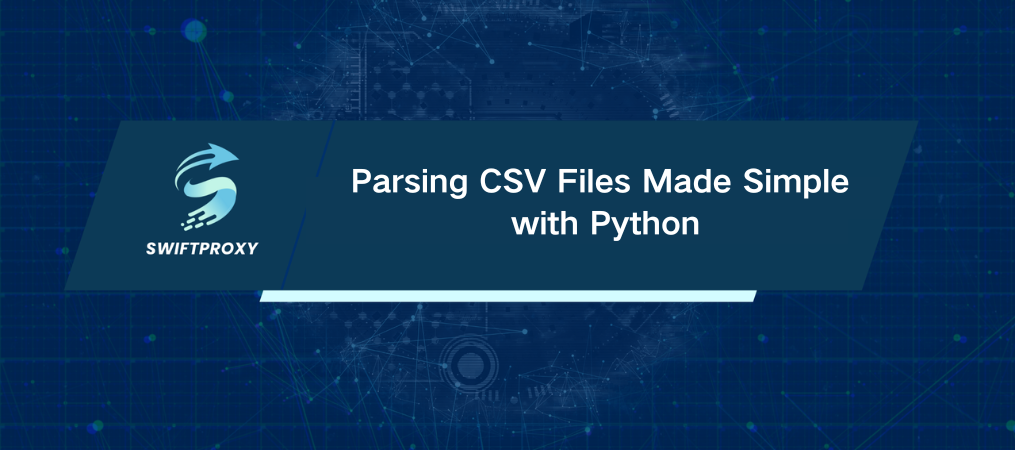Parsing CSV Files Made Simple with Python

In the world of data, CSV files are the bread and butter for simple, accessible information storage. But when it comes to parsing them, Python can help you transform that raw data into actionable insights with ease. Whether you're handling small datasets or massive tables, mastering the art of CSV parsing is a skill every data analyst and developer should have.
Understanding CSV File
A CSV (Comma Separated Values) file stores data in plain text, with each value separated by commas and each row of data appearing on a new line. Sounds simple, right? Well, this simplicity is what makes CSV files so widely used. They're easy to create, edit, and share across various platforms and applications, from Excel spreadsheets to databases.
Despite their simplicity, CSV files can be immensely powerful. Their universal format allows them to be easily accessed and processed by just about any software.
How to Parse CSV Files with Python
Python's built-in CSV library makes reading and writing CSV files a breeze. No need for extra libraries—everything you need is right there. Here's a quick rundown of how to open, read, and parse a CSV file using Python:
import csv
with open('university_records.csv', 'r') as csv_file:
reader = csv.reader(csv_file)
for row in reader:
print(row)
This script opens the CSV file university_records.csv, reads its content, and prints each row. Simple, yet powerful.
Writing to a CSV File
But what if you need to write data to a CSV file? Python's csv module has you covered with a couple of key methods:
· .writer() – Creates the file.
· .writerow() – Adds data to a row.
Here’s how you do it:
import csv
row = ['David', 'MCE', '3', '7.8']
row1 = ['Monika', 'PIE', '3', '9.1']
row2 = ['Raymond', 'ECE', '2', '8.5']
with open('university_records.csv', 'a') as csv_file:
writer = csv.writer(csv_file)
writer.writerow(row)
writer.writerow(row1)
writer.writerow(row2)
This appends data to your university_records.csv file, creating a new row for each entry. No extra steps needed.
Enhancing Parsing with Pandas
If you've ever worked with large datasets or need advanced analysis features, you'll quickly discover that Python's built-in CSV library has limitations. That's where Pandas comes in. Pandas is the go-to library for data analysis, and it has powerful tools for working with CSV files. From handling missing values to cleaning data, it's the Swiss Army knife of data processing.
Here's how you can load and write CSV files using Pandas:
import pandas as pd
data = {"Name": ["David", "Monika", "Raymond"],
"Age": [30, 25, 40],
"City": ["Kyiv", "Lviv", "Odesa"]}
df = pd.DataFrame(data)
file_path = "data.csv"
df.to_csv(file_path, index=False, encoding="utf-8")
With just a few lines, you've created a DataFrame and saved it as a CSV file. Pandas gives you the flexibility to handle more complex data structures and makes it easier to perform complex operations.
Key Benefits of Pandas
So why choose Pandas? Let's break it down:
· Easy File Upload: Pandas handles messy, inconsistent data effortlessly. It automatically parses data, saving you from endless manual corrections.
· Scalability: While Python's standard libraries can lag with large datasets, Pandas is optimized for performance and handles large CSV files without missing a beat.
· Data Transformation: With built-in tools to handle missing values, incorrect formats, and duplicates, Pandas makes advanced data manipulation straightforward.
If you're working with large datasets or need to do some heavy lifting with your data, Pandas is the tool you need.
Reading CSV Files with Pandas
Once you've got your CSV, Pandas lets you quickly inspect the contents:
import pandas as pd
df = pd.read_csv("data.csv")
# Inspect the first 5 rows
df.head()
# Inspect the last 10 rows
df.tail(10)
# Get info on the DataFrame
df.info()
You can also extract specific columns:
df["Name"] # Extract the "Name" column
df[["Name", "Age"]] # Extract both "Name" and "Age" columns
Modifying and Removing Rows in Pandas
Pandas also lets you modify or remove rows with ease. Here's how:
Add a New Row:
new_row = pd.DataFrame([{"Name": "Denys", "Age": 35, "City": "Kharkiv"}])
df = pd.concat([df, new_row], ignore_index=True)
df.to_csv(file_path, index=False, encoding="utf-8")
Alter a Row:
df.loc[df["Name"] == "Ivan", "Age"] = 26
df.to_csv(file_path, index=False, encoding="utf-8")
Remove a Row:
df = df[df["Name"] != "Mykhailo"]
df.to_csv(file_path, index=False, encoding="utf-8")
Conclusion
Parsing CSV files with Python is straightforward—whether you're using the built-in CSV module for simple tasks or turning to Pandas for more complex data processing. If you're dealing with large datasets or need more advanced features, Pandas is your best friend. For quick tasks, the standard CSV module is a perfect fit.
Remember, whether you're writing or reading, Python gives you the flexibility to handle CSV files efficiently. With Pandas in your toolkit, you're not just working with data—you're mastering it.

















































